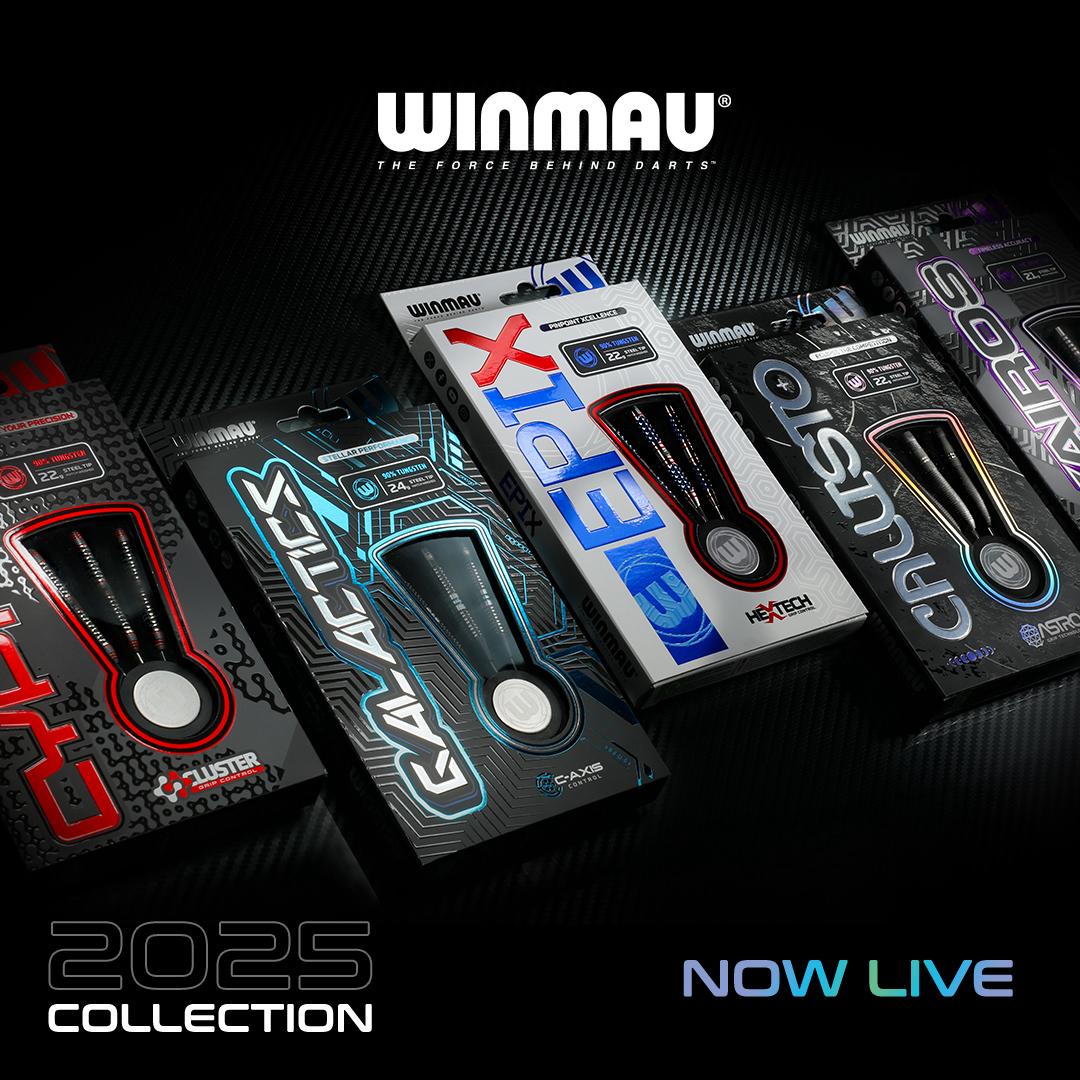In the first part of , The Technology Game? we looked at the recent explosion in technology innovations and advances that have been introduced over the last decade or so. Here in Part II we will look at Flights, Stems, Points and more. The main areas covered in Part 1 included; Premium marketing, barrel design and grip variations. All have been given a high profile in the last 5-10 years. The jury was still out on the success or necessity of these idea’s and whether they truly have added to the improvement of players at either amateur or professional level.
There are two other area in which R & D and sales and marketing booms have taken place:
Accessories: Flights, Stems and more.

From dart’s earliest commercial days, the variations in the additions to the barrel have been as numerous and interesting as to the barrels themselves. Flight materials changed from feather to imitation feather, then plastic, rip stop material and then thinner and thinner polymer types. The shape varied enormously over the years, with the what is now referred to a the standard shape as well as pear shapes, kite shapes and variations up the theme. In recent years designs such as fantail, V wing, tomahawk, slim, DSX and numerous others have been introduced. In the case of stems/shafts the variations have also been coming thick and fast since the 1970’s. From the initial wooden canes, lightweight plastics, steel, aluminium, titanium, one piece or separate items, side loading (Slik Stix) and now, coming full circle with, the current combination flight & stem sets, made from plastic/polymers by manufacturers such as Cosmo or L Style, offering a fixed single unit. At the same time length of stem and the correct combinations have moved back and forth quite considerably.

Again the idea of premium products that will add to your game and provide a glamorous look has been deployed by the manufacturers. Whilst a basic flight stem and fixing set can still be bought for less than £1 where as a combination of the latest Target Pixel Stems & Phil Taylor Flights will cost around £15, alternatively the one piece systems offered, by various manufacturers, cost between £8 and £15 per set up.

All of these changes and developments have, claimed either logical or scientific, reasons they will improve upon the existing templates. Amongth these are; faster speed through the air, more aerodynamic profiles, less weight, better balance, additional grip and a host of other claims. many have been used and endorsed by professional players and have gone on to win titles or great matches. World Championships have been won with standard flights, smaller standard flights, pear-shaped flights and others. stem length has varied a little and fixings of flight to stem have also varied. But is this through real improvement or simply great players being able to use differing equipment with which they felt comfortable at any one time?
If we again look at the top twenty players we will see how this has panned out of the last twenty years or so, again we shall also look at the next generation of players and see if changes are imminent? In terms of flight shape, the standard shape is used by almost all of the top twenty PDC players. The size and shape varies a little but are described as standard. Taylor uses a unusual very slim “lightning bolt” design. Brendon Dolan will be associated with Kite shaped as he hit his double start 9 darter with them and Barney changes often! The slight size variation is claimed to either assist in the flight, improve visibility, and reduce deflections.

In terms of stem set up the evidence is simple overwhelming. Phil uses some of the innovative design, metallic stems but almost every other player in the top twent uses a nylon/plastic/ carbon fibre stem, most use a stem ring of some description and a majority seem are between 35 and 44mm in length. These can be bought for less than £2 per set up even for branded items, generic versions can be bought for pennies.

When we tested these combinations and asked many top players most players agreed that weight and simplicity to change easily were the reasons they believed the simple set ups were best. For the average player or beginner cost is also a large factor.
The above is not to say that success cannot be achieved with other designs and set ups. Dolan used a simple kite flight and lengthy aluminium stem for his 9 darter, Steve Beaton has used Standards, Oversized Pear Flights and both short and longer stems, usually aluminium to huge success over a 30 year career. It does suggest that, with the odd exception, simplicity is the key here and that over design or elaboration is unnecessary.
Points

Although a rather vital element, of the dart, for many years points were pretty much left alone. Slight changes in colour or size seemed almost accidental. The North Americans favoured a longer point many player customised their own points. However it was pretty ad hoc and unsystematic. The last few years however have seen some dramatic changes. Grooved or diamond cut points, for either increased board grip or finger placement, have made a large impact. Knurled points with a section to rest the finger against prove popular and more recently the “Storm” point innovation, this makes the barrel and point almost seemless. many advantages are claimed by designers and makers of these points and there seems to be merit in them. Storm points reduce damage to flight set up and may be a factor in the simplicity trend? Grip on points has seemed to reduce fall outs, (except on bad Unicorn days!) Many top players use one innovation or more. The many different combination of possible grip and point shape allow a high level of personalisation to an area previously not explored or marketed.
Two commercial bonus spring to mind, though there are more, firstly the increased roughness of many points may increase the wear and tear on boards and results in lower expectations for durability and more regular purchase, also points of various types can be easily fitted to many other darts, not brand specific, again allowing limitless experimentation with and customization of equipment. In short, point development, and technology, may be one area in which genuine improvement and innovation have been brought to modern darts.

Technology Game?
It is hard to fully assess the impact of technology and innovation over recent years. Firstly many of the innovations are not really new, they are re packaged or cosmetic developments based on previous items. Secondly the facts that a very small number of modifications have been accepted, by an even smaller number of the top players, at the top end of the game suggests that they do not feel anything is added to their performance. This however may be misleading as most have not grown up with the newer idea’s and may have been conditioned to be afraid of change or suspicious of tech. Yet it still appears to be the case with the best teenage players?
On the plus side, the huge volume of choice available to the average player is great for the game, conversations about new ideas , designs and equipment are always held amongst players, of all levels, and nearly everyone is willing to give things a try. The research and development undertaken by manufacturers after a slice of the market improves choice of kit and maker. Quality overall is probably improved by modern methods, and thus some of the premium accessory items can last a very long time.
However for those starting out the best advise may still be to try as many sets as you can manage to get a rough idea of the weight and style you like. Then find a dart shop with try and buy facilities. Once you think you have found a set you like, match them up with relatively cheap flights, stems, springs etc that you can keep replacing or even varying for very little cost. Make use of buy,swap, sell web sites or Facebook groups, these can allow you to test darts and accessories without losing all your initial costs. Keep checking in with AIM for our players guide to selecting darts!
In our experience it is the player and their efforts, that make the difference, not the tech. Within the last five years a number of players over the age of 30 have come through the ranking to occupy high position or do well in TV events.
One of these used a dart that is over 25 years old. Not just the design but the actual set! A medium length nylon stem and stem ring is combined with an everyday pattern dimplex flight. This dart and set up reached the big 5 major PDC events and at times averaged well in excess of 100 whilst, both Pro Tour and in majors, 15+ consequetive legs were won against the worlds best including MVG!

In addition last years runner up in the world youth championships, Nathan Aspinall, uses darts that, either came from or, were inspired by his Grandad.








